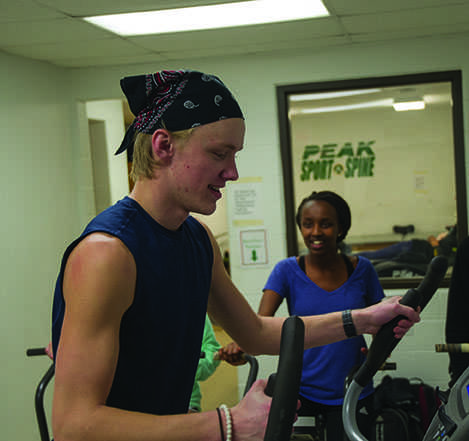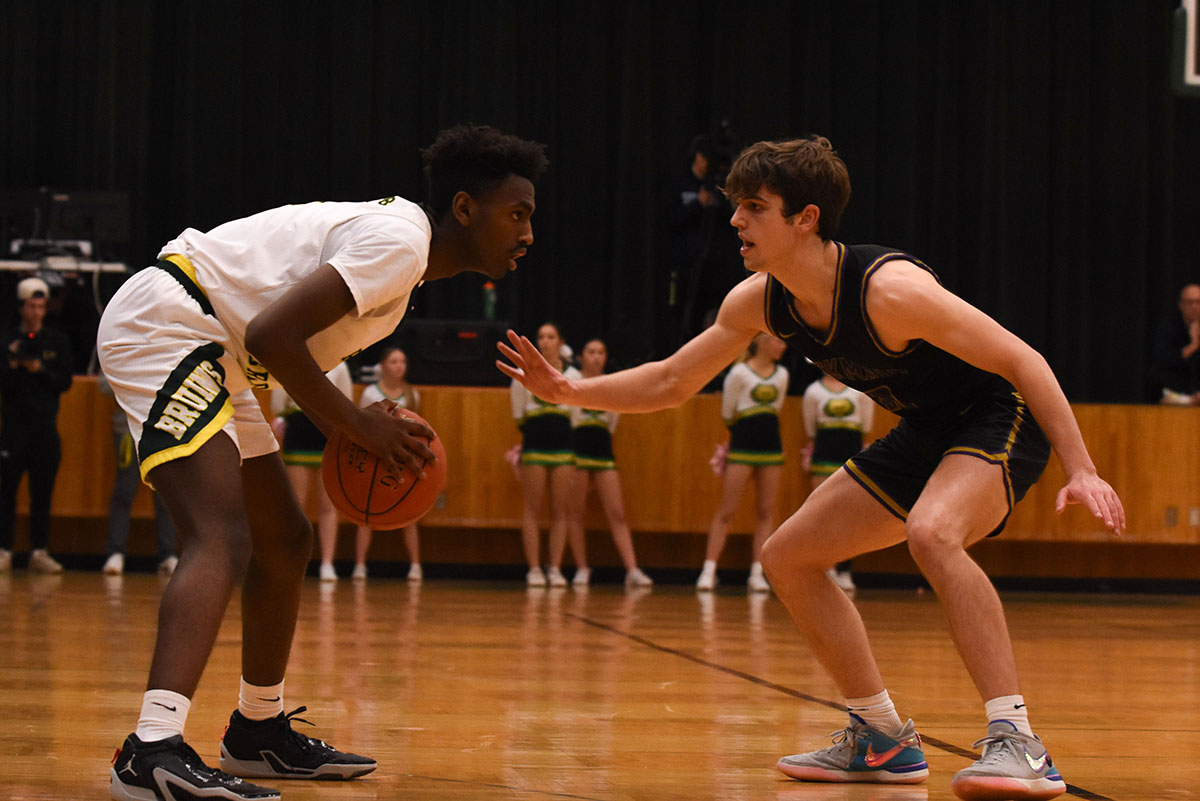[dropcap style=”simple” size=”4″]D[/dropcap]uring a February basketball practice session, as freshman Kate Linnemeyer was jumping up and cutting to the basket to catch a pass, she came down on her knee wrong, ultimately tearing her Anterior Cruciate Ligament (ACL). For about a minute, Linnemeyer explains she was impotent of any feeling. When it first happened, she said she heard a really loud pop, which scared her more than it actually hurt. Looking back on the incident, Linnemeyer said different scenarios run through her mind; if she hadn’t jumped the whole thing could have been avoided.
Linnemeyer has been playing basketball since second grade; the sport has been a part of her life for as long as she can remember. This injury has disengaged her from the game, making her miss the sport, especially with a lot of her time currently being spent in physical therapy three to four times a week.
“When I first found out I couldn’t play the rest of the season or summer ball, I was devastated,” Linnemeyer said. “To me, basketball is the place where I can go and not have to think about anything else besides working hard and having fun.”
ACL injuries can occur in all sports, but are most common in football, basketball and soccer, according to atyourownrisk.org. Additionally, Linnemeyer is a part of the 90 percent of student athletes that report some sort of sports-related injury.
The only way Linnemeyer could play basketball again was to have surgery, so naturally, getting an ACL repair was a fair tradeoff to be able to play the sport that’s been a part of her for so long. Linnemeyer said, however, that the setback has been motivating for her and has increased her determination to work hard for a smooth recovery.
[quote]“Mentally it’s been really hard thinking about not being able to finish the season or play any summer ball, plus the little things like not being able to go swimming in the summer,” Linnemeyer said. “Physically its been even harder going from working out at least two hours everyday to barely doing anything.”[/quote]
Linnemeyer even says she misses running campions, which are like running suicides, and 100 makes, where players have a certain amount of time to make 100 baskets. Furthermore, Linnemeyer believes this injury has made her all the more thankful for a healthy body and the opportunity to play.
University of Missouri-Columbia (UMC) Athletic Trainer Allison Mosel said any long-term injury on the body can take a toll both physically and mentally. The process can be long with many days that feel repetitive, especially when the recovery process takes an extended period of time.
“Try not to specialize in one sport when still in developmental stages of life,” Mosel said. “Studies have shown that sport specialization can cause increased levels of injury, burnout and sport withdrawal at earlier ages when compared to athletes involved in multi-sport participation.”
Mosel, who concentrates on treating the UMC women’s basketball team, said injuries can be so taxing because most long-term rehab processes can be very demanding. Athletes competing at high levels especially have to be very patient through the rehab process to meet all the goals set for them by their medical care team, she said.
Now, for Linnemeyer, she has been out for over a month, yet she still has nerves about tearing it again or even tearing her other knee, and how that could affect the next season. Having had an injury so early in her high school career, Linnemeyer is continuously considering preventive measures for the future. She plans on wearing a brace for the rest of her basketball career just to be safe, but this won’t stop her from playing just as hard as she would without it.
Through the use of her arms in lifting girls and tumbling in cheerleading, additional pressure was added on junior Aubrey Sanders’ rib, who, like Linnemeyer, sees the effects an injury can have on a sport. While Sanders’ injury was not directly caused by cheering, Sanders said participating in her sport definitely made it more difficult to continue practicing.
“[The] injury was mostly caused by a lack of cartilage in my rib cage, and as I continued to practice this remaining cartilage began to dissipate as my bones were grinding together,” Sanders said. “This resulted in one of my rib bones on my left side to physically pop out of place.”
As an athlete, Sanders acknowledges that in any sport there is an inherent risk of injury. In that, athletes have to be prepared to do what they are expected under the added stress and pain of an injury, she said.
When recovering from an injury or surgery, Mosel said the most successful athletes are those that do not cut corners. Mosel suggests maintaining a healthy lifestyle through proper food intake and hydration. Additionally, Mosel believes getting a pre-season physical and following the care provider’s recommendations for that specific sport is crucial, too.
[quote]“Always seek and follow medical advice for any injury from your medical care team to minimize any long-term risks that may be associated,” Mosel said. “Listen to your body and do not self-diagnose. Seek medical care in the event of an injury and ask any questions you do not understand to your medical provider.”[/quote]
Sanders is an athlete who typically practices four times a week, but depending on the season it can be more. For example, during the weeks leading up to the state cheerleading meet held Oct. 28 and 29, practices were daily. Jacqueline Crockford, an exercise physiologist and education specialist at American Council told self.com that it is normal for muscle soreness to occur after a workout that was challenging and/or new to the body, however, it can be just as challenging to differentiate between pain and injury. Usually in Sanders’ mind, she classifies an injury by how long it has been hurting and what kind of pain it is. Whether it is a sharp pain or an ache, Sanders, like breakingmuscle.com, knows that she understands her body and can determine whether or not one can keep going or should get help from a professional.
According to the American Physical Therapy Association, however, pushing through too much pain can lead to injury. Luckily, athletes like Sanders, experienced in their sport, have enough knowledge in taking care of and listening to their bodies both on and off the court.
“Trust your training and coaches,” Sanders said. “They spend time to make sure you have the capability physically to the skills necessary to excel in your sport through conditioning and practice.”
In terms of avoiding injuries, Mosel recommends gradually progressing into the sport to avoid overuse. Taking time for rest and recovery on off-days, and in-between training cycles is another method to decrease the chances of sustaining an injury.
“As with any injury, there is always a chance of re-injury,” Mosel said. “Each injury we see has a different effect on the body and risks that can exist for further injury to that same area or an increased risk to other areas of the body.”
Sanders acknowledges that when tensions are high, something like an injury can be frustrating to deal with. She said that she certainly appreciates it when her body is in full health to be able to compete. For any performer, including Sanders, she said there is nothing like the feeling of being able to leave everything on the floor knowing 110 percent has been given.
“It’s always hard to push through pain, but at the end of the day when you participate in a sport you’re not only competing for yourself,” Sanders said. “You’re competing for the person standing next to you, and that reason is enough to keep going.”
What has been the toughest injury for you to recover from? Let us know in the comments below.
Categories:
Players reflect on combating injuries
March 30, 2018

0
Tags:
More to Discover












































































